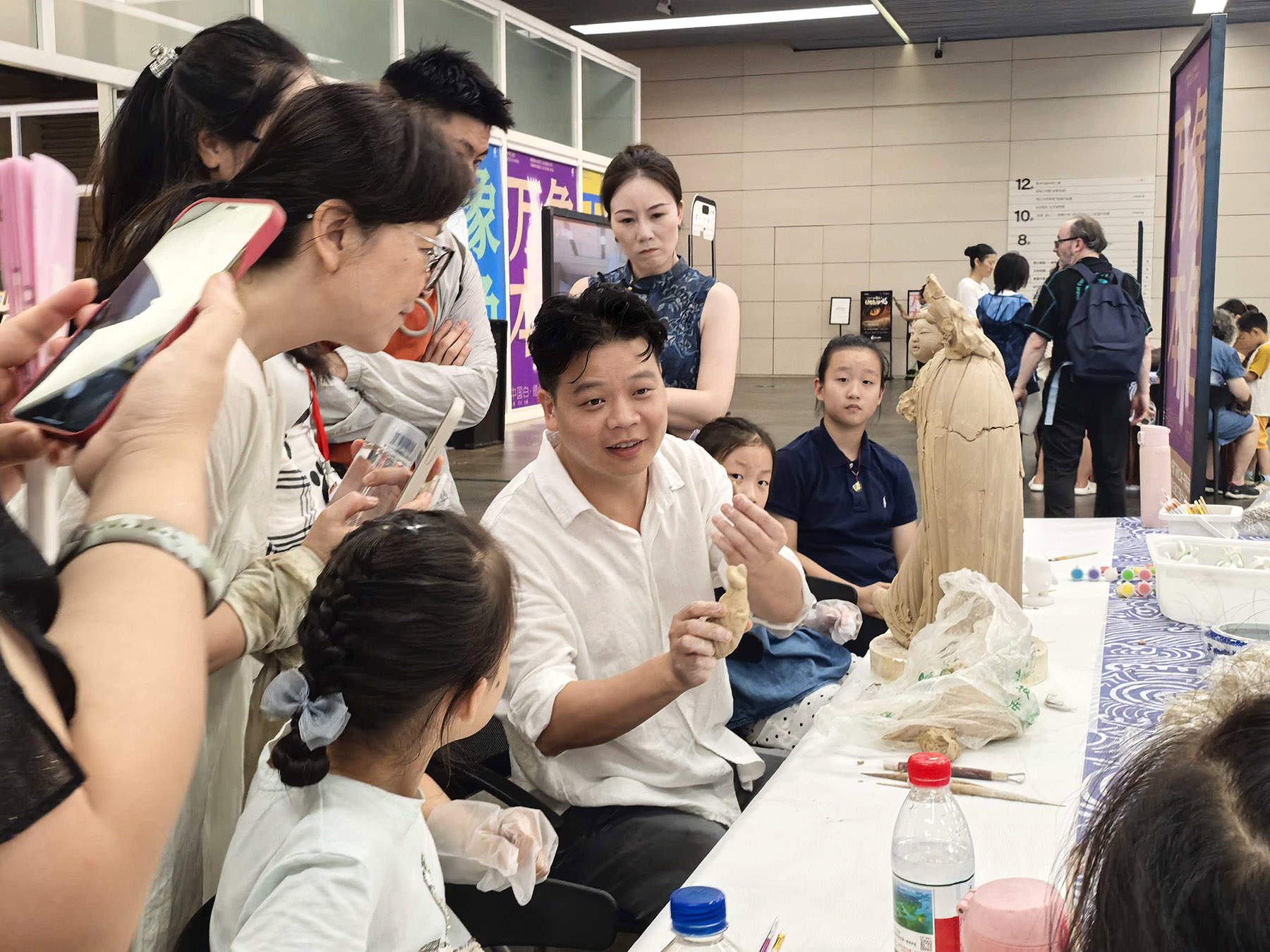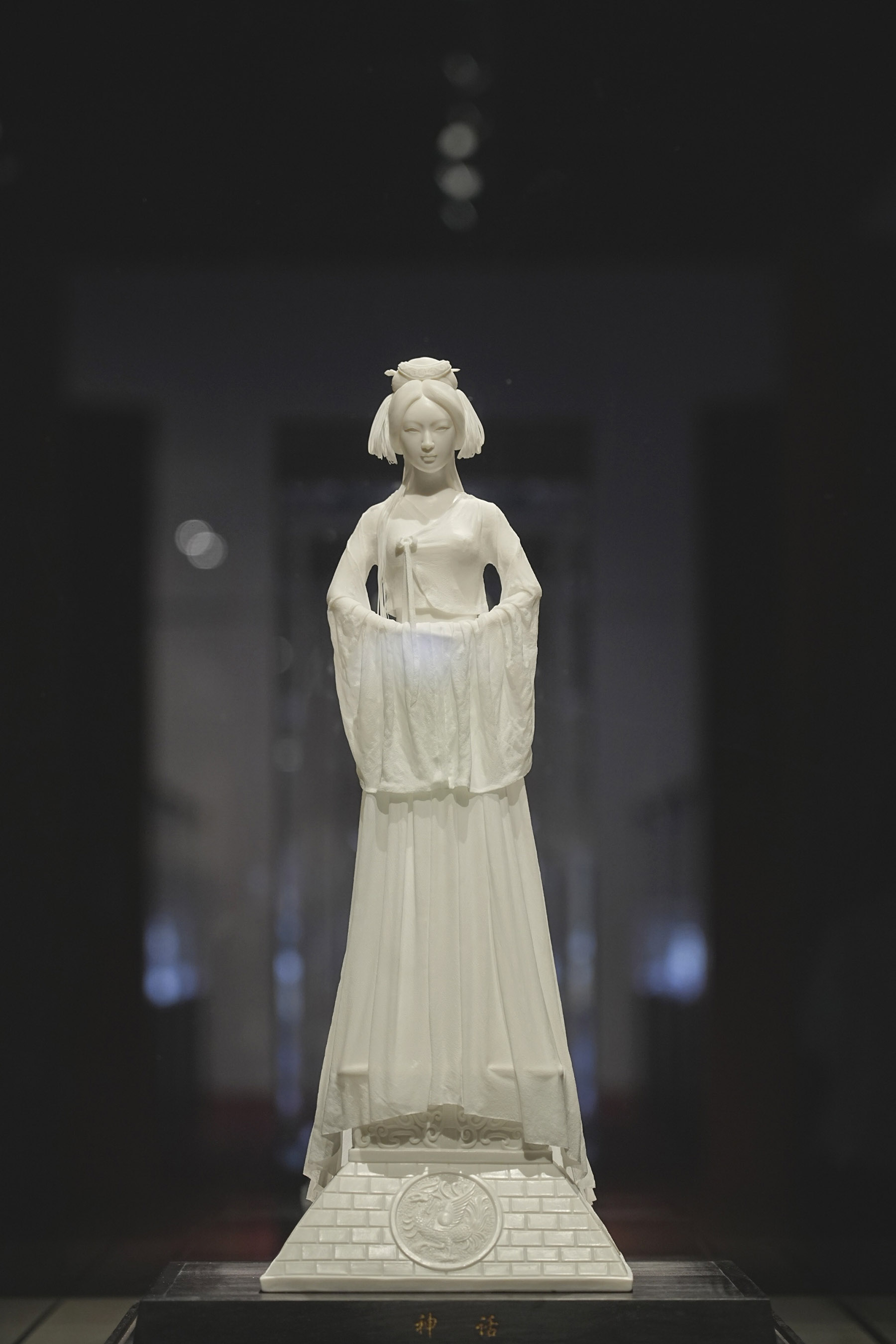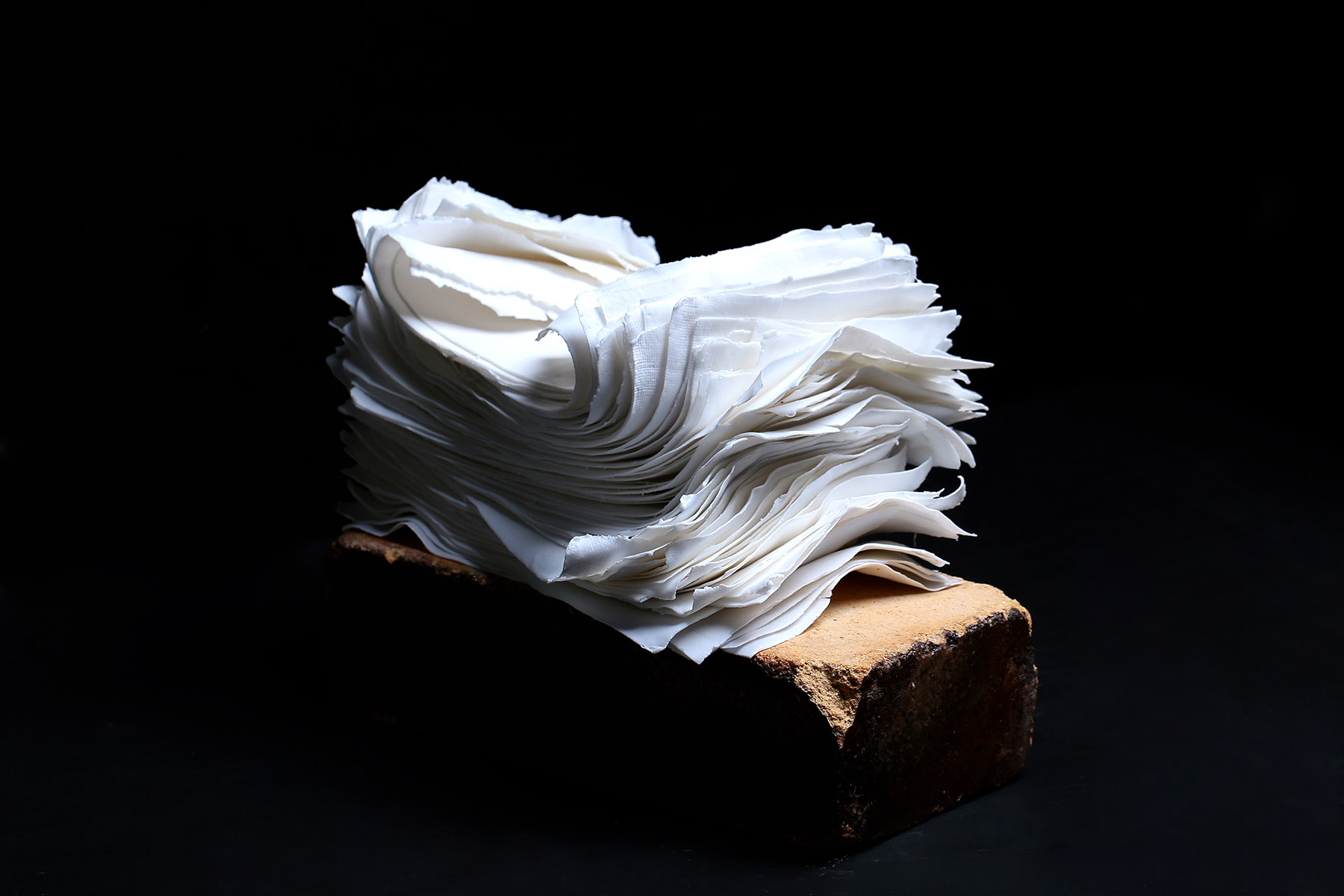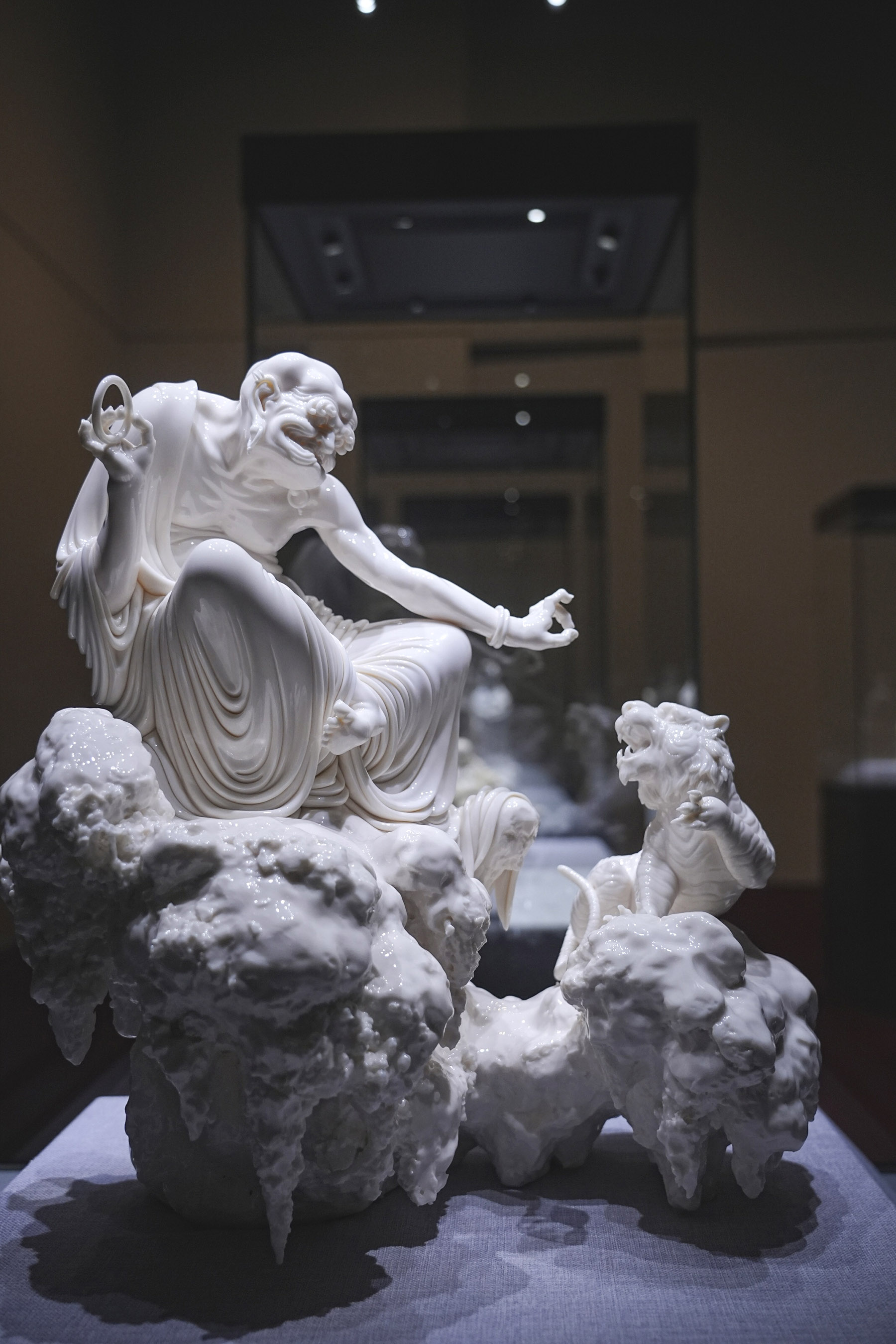Showcase highlights the history of Dehua's famous white porcelain culture, which quickly attracted international attention and inspired artists worldwide, Zhang Kun reports.

Blanc de Chine, or "white from China", originated in a small town in Southeast China's Fujian province that has grown to become a big name internationally. Blanc de Chine is the French name given to porcelain goods made in Dehua, due to their outstanding quality and refined aesthetics.
Dehua is a county in the middle of Fujian under the administration of Quanzhou city, with a population under 300,000. The county boasts a pottery-making history of over 3,700 years, Wu Zhipu, head of Dehua county, says at the opening of the largest exhibition of Dehua porcelain in Shanghai: "Dehua is one origin of China's ceramic culture."
The ivory-white glaze of Dehua porcelain has won the hearts of people worldwide, becoming an ambassador of global cultural exchanges, he says. Dehua porcelain can be found in more than 40 internationally renowned museums.
READ MORE: The deceptive beauty of ceramic artistry
The exhibition Pure by Nature: The Art of Blanc de Chine is open at the China Art Museum, Shanghai, until Sept 18. It presents over 200 Dehua porcelain masterpieces in a systematic showcase of its glorious history and contemporary achievements, and explores its core aesthetics and international significance that transcends cultures, says Zhang Xiaoling, curator of the exhibition and dean of the College of Fine Arts at East China Normal University.

During the Song Dynasty (960-1279), Dehua porcelain began entering overseas markets and gradually became an important export commodity from China along the ancient Maritime Silk Road.
A small jar in the collection of the St Mark's Basilica in Venice, Italy, was believed to be the first Chinese porcelain to reach Europe. It was made in Dehua and is said to have been brought back by Marco Polo in the 13th century.
Dehua porcelain achieved great technical improvements in the Ming Dynasty (1368-1644). White porcelain acquired a new, pure, refined look when decorative pieces, tablewares, and statues of Buddhist deities were exported to Southeast Asia and Europe in the 18th century.
Augustus the Strong of Dresden (1670-1733), also known as Augustus II, King of Poland, was a renowned enthusiast of Dehua porcelain. He obtained more than 1,000 pieces for his collection, according to the introduction of Blanc de Chine on the Victoria &Albert Museum (in the United Kingdom) website.

An alchemist under Augustus II's command successfully created the first European white porcelain in the early 1700s. "Since then, European manufacturers, such as Meissen, St. Cloud and Chelsea have made imitations of Dehua white porcelain and reinvented some of its iconic forms and patterns," according to the museum's introduction.
The exhibition in Shanghai is divided into three sections. The first chapter, Renewing the Present, features iconic pieces by contemporary masters, such as a cauldron made by Chen Renhai for the Fujian Pavilion at the World Expo 2010 in Shanghai, a Buddha statue that combines porcelain crafting with Thangka painting, and jewelry inlays by Lian Zihua.
The most popular exhibit in this section is the statue of Princess Yushu, inspired by the 2005 film The Myth. Visitors swarmed around the sculpture, marveling at the meticulous depiction of her chiffon robe, which is no more than 0.2 millimeters at its thickest.
Lian Deli takes great pride in his creation, saying that "it is the thinnest piece of Dehua white porcelain ever made." It took him nearly seven years to complete the sculpture after hundreds of firing failures.
"You have to adjust the clay composition and control the kiln temperature constantly. It takes meticulous skills and a bit of luck," he says.

Li Zhanggao, one of the exhibition's featured artists, shares with China Daily his experience transitioning from a graphic designer to a master craftsman of Dehua porcelain.
Almost everybody from Dehua has a connection to porcelain, he says. "In our community, you will always find some craftsmen in this trade from each generation."
His father worked with porcelain production materials, and he became attracted to the porcelain sculptures that depict human figures. "I have always been interested in China's traditional culture, so I decided to create my own interpretation of traditional subjects."
On exhibition are two of Li's 18 Arhats series, which tell of the feats of legendary Buddhists. Each standing 62 centimeters tall and 45 centimeters wide, the sculptures depict two Buddhist monks conquering a tiger and dragon, respectively.
"You see the tiger's mouth opening to bite, but as its eyes meet with those of the Arhat, the paws are half-dropped, right at the moment it was tamed," he says.

The second chapter of the exhibition, Echoes of History, features treasured cultural relics from the Quanzhou Museum's collection presented in chronological order, from pottery birds unearthed from the primitive celadon kiln dating back 3,700 years to Buddha and other Chinese deity statues by He Chaozong (1522-1600).
In the exhibition hall's center in this chapter stands an installation featuring the Taixing shipwreck. The giant merchant ship set sail from the port of Amoy (today's Xiamen in Fujian province) in 1822, heading for Indonesia. It hit a reef and sank to the bottom of the sea with all its valuable cargo. The shipwreck was salvaged in 1999, where many Dehua porcelain wares were discovered.
This chapter reveals the rich history of Dehua porcelain through its cultural relics, documents and videos.
The third chapter, Crafting the Future, features experimental creations by contemporary Dehua ceramic artists who craft unconventional forms, subjects and techniques.
By hosting the exhibition, the China Art Museum, Shanghai (also know as the Shanghai Art Museum), hopes to "bring audiences close to the charm and aesthetics of Dehua porcelain in Shanghai, a metropolis that attracts worldwide attention, and inject new vitality into the city's cultural life," says Wang Yichuan, executive director of the institution.
Contact the writer at zhangkun@chinadaily.com.cn


